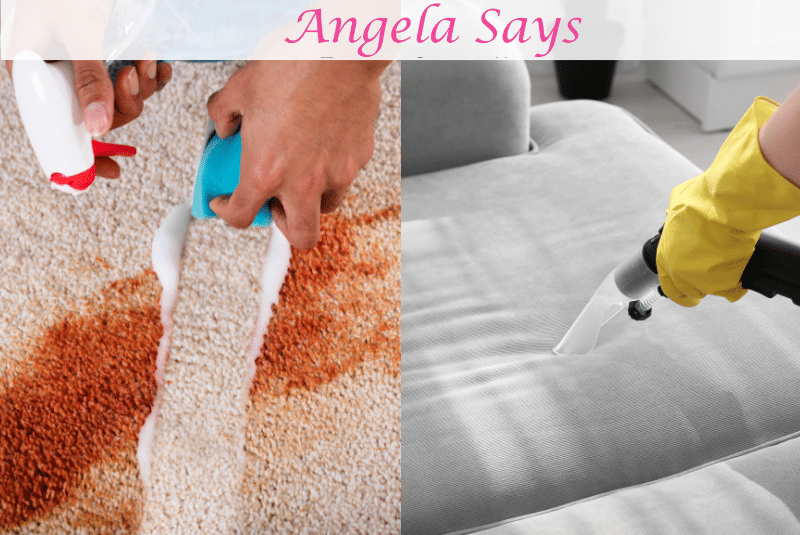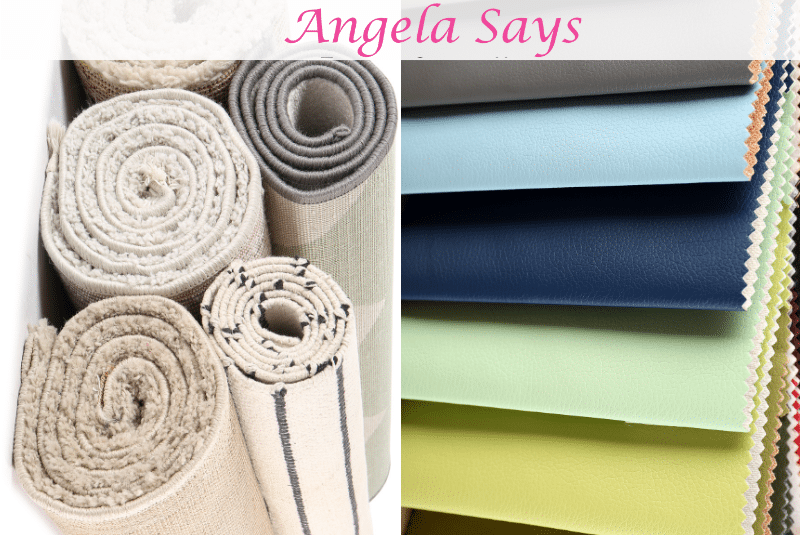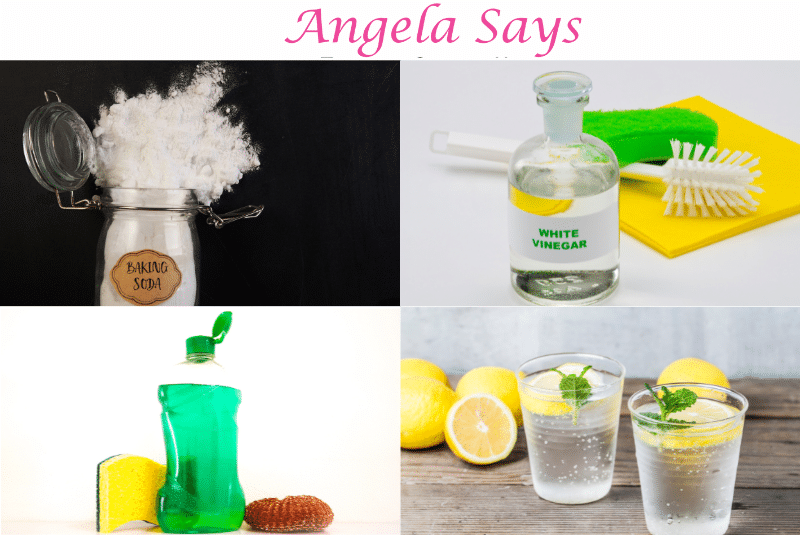The Ultimate Guide to Removing Stains from Carpets and Upholstery

Stains on carpets and upholstery are an unavoidable part of everyday life. From a spilled cup of coffee in the morning rush to muddy paw prints after a rainy walk, accidents happen when we least expect them. The challenge isn’t just about keeping your home looking fresh—it’s also about protecting your investment. Carpets and upholstered furniture are not only costly but also add comfort, warmth, and style to your space.
When stains set in, they can quickly become long-term eyesores or even permanently damage the fibers if not treated correctly. That’s why acting fast and choosing the right cleaning method makes all the difference. In this comprehensive guide, we’ll walk you through everything you need to know about removing stains—whether they’re caused by food, drink, ink, grease, or pet-related accidents. You’ll also learn how to handle different fabrics, when DIY cleaning is safe, and when it’s time to call in the professionals.
By the end of this guide, you’ll have the knowledge and confidence to tackle stains head-on and keep your carpets and upholstery looking as good as new.
Understanding Carpet and Upholstery Fabrics

Before reaching for a cleaning solution, it’s important to understand the type of fabric you’re dealing with. Carpets and upholstery aren’t all made the same, and what works well on one material could ruin another. Knowing your fabric type helps you avoid fading, fiber damage, or setting a stain permanently.
Natural Fibers
Natural fibers such as wool, cotton, silk, and linen are often found in high-quality carpets and upholstery. While they offer durability and elegance, they’re also more delicate when it comes to cleaning. For example, wool can shrink if exposed to excess water, and silk can lose its sheen if cleaned with harsh chemicals.
Synthetic Fibers
Synthetic materials, such as nylon, polyester, acrylic, and olefin, are more resistant to staining and easier to clean. They’re commonly used in households with pets and kids because of their durability. However, they can sometimes hold onto oily stains more stubbornly than natural fibers.
Why Fabric Type Matters
The wrong cleaning method can cause permanent damage. Using hot water on wool, for instance, may cause felting, while applying the wrong solvent to a synthetic fabric could leave behind discoloration. That’s why identifying your fabric before treatment is key.
Quick Fabric Test
Not sure what type of fabric you have? Perform a quick spot test. Apply a small amount of water or cleaning solution to an inconspicuous area and blot it. If you see color transfer or changes in texture, stop and consider a gentler method—or call a professional.
General Stain Removal Principles
When it comes to stains, timing and technique matter just as much as the cleaning solution you choose. A quick response can often prevent a stain from setting, while the wrong approach may spread the mess or damage the fabric. Keep these principles in mind before tackling any spot on your carpet or upholstery:
Blot, Don’t Scrub
Always blot stains with a clean, white cloth or paper towel. Scrubbing may feel effective, but it pushes the stain deeper into the fibers and can cause permanent damage to the weave or pile. Blotting gently lifts the stain without spreading it further.
Work from the Outside In
Start cleaning from the outer edges of the stain and move inward. This prevents the stain from expanding and creating a larger spot.
Cold vs. Warm Water
Not all stains respond the same way to water temperature. Cold water is best for protein-based stains, such as blood or dairy, while warm water is more effective for grease and oily spills. Avoid hot water unless you’re certain it won’t set the stain.
Use White Cloths or Towels
Colored cloths may transfer dye onto your carpet or upholstery, exacerbating the problem. Stick with white cotton cloths or plain paper towels for safe blotting.
Test Before Applying
Before using any cleaning solution—store-bought or homemade—test it on a hidden section of fabric. If it causes fading, discoloration, or damage to the fibers, stop immediately and try a different approach.
By following these universal guidelines, you can minimize damage and increase the chances of successfully removing the stain, regardless of its type.
Common Household Items for Stain Removal

You don’t always need expensive, store-bought cleaners to deal with stubborn stains. In fact, some of the best solutions may already be sitting in your kitchen or laundry cabinet. These everyday household items are safe, affordable, and effective for treating a wide variety of stains:
Baking Soda
Baking soda is a natural deodorizer and absorbent. It works especially well on greasy or oily stains and can also help lift unpleasant odors from carpets and upholstery. Simply sprinkle it over the stain, let it sit, and then vacuum it up before blotting with a cleaning solution.
White Vinegar
A powerhouse in stain removal, white vinegar breaks down many food and drink stains while neutralizing odors. It’s also effective at loosening up residues left behind by sticky spills. Always dilute vinegar with water to avoid over-saturating fabrics.
Dish Soap
Grease and oil stains respond well to a few drops of mild dish soap mixed with warm water. Dish soap helps cut through oily residues without being too harsh on fabric fibers.
Hydrogen Peroxide
For organic stains, such as blood, juice, or wine, hydrogen peroxide can be highly effective. However, it should be used cautiously since it has mild bleaching properties. Always test on a hidden area first.
Club Soda
Club soda’s carbonation helps lift fresh stains, such as wine or coffee, out of carpet and upholstery fibers. Blotting with club soda is often enough to minimize damage if applied immediately after the spill.
By combining these common household products with the stain removal principles outlined earlier, you can create quick, effective cleaning solutions without the need for specialized chemicals.
How to Remove Different Types of Stains
Different stains call for different strategies. Knowing which method to use can save your carpets and upholstery from permanent damage. Here are the most common stain types and effective ways to treat them:
1. Food and Drink Stains
- Coffee and Tea: Mix one tablespoon of white vinegar with one tablespoon of dish soap in two cups of warm water. Blot the stain until it lifts.
- Wine: Immediately blot the stain with a clean cloth, then pour club soda over it and sprinkle salt to absorb the liquid before vacuuming.
- Chocolate: Gently scrape off any hardened pieces, then blot with a solution of dish soap and warm water.
2. Grease and Oil Stains
- Blot with paper towels to soak up excess grease.
- Sprinkle baking soda or cornstarch over the stain to absorb oils—let it sit for 15 minutes, then vacuum.
- Finish by applying a small amount of dish soap diluted in warm water.
3. Pet Stains and Odors
- Blot urine immediately and rinse with cool water.
- Apply an enzymatic cleaner to break down proteins that cause lingering odors.
- For odor control, sprinkle baking soda once the area is dry and vacuum after a few hours.
4. Ink and Marker Stains
- Dampen a cloth with rubbing alcohol or hand sanitizer and gently dab the stain.
- Avoid rubbing, as ink spreads easily. Continue blotting until the stain fades.
5. Mud and Dirt
- Allow mud to dry completely before attempting to clean.
- Vacuum the dried debris, then use a mild dish soap solution to treat remaining marks.
6. Blood Stains
- Always use cold water, as warm or hot water sets the stain.
- Blot with cold water and, if necessary, apply a small amount of hydrogen peroxide. Let it bubble before blotting dry.
7. Gum and Wax
- Place an ice cube in a plastic bag and press the gum until it hardens; then, scrape it off gently.
- For wax, cover the area with a paper towel and press it with a warm iron to lift it from the fabric.
By following these targeted methods, you can tackle nearly any stain without causing further harm to your carpet or upholstery.
How to Remove Different Types of Stains
Different stains call for different strategies. Knowing which method to use can save your carpets and upholstery from permanent damage. Here are the most common stain types and effective ways to treat them:
1. Food and Drink Stains
- Coffee and Tea: Mix one tablespoon of white vinegar with one tablespoon of dish soap in two cups of warm water. Blot the stain until it lifts.
- Wine: Immediately blot the stain with a clean cloth, then pour club soda over it and sprinkle salt to absorb the liquid before vacuuming.
- Chocolate: Gently scrape off any hardened pieces, then blot with a solution of dish soap and warm water.
2. Grease and Oil Stains
- Blot with paper towels to soak up excess grease.
- Sprinkle baking soda or cornstarch over the stain to absorb oils—let it sit for 15 minutes, then vacuum.
- Finish by applying a small amount of dish soap diluted in warm water.
3. Pet Stains and Odors
- Blot urine immediately and rinse with cool water.
- Apply an enzymatic cleaner to break down proteins that cause lingering odors.
- For odor control, sprinkle baking soda once the area is dry and vacuum after a few hours.
4. Ink and Marker Stains
- Dampen a cloth with rubbing alcohol or hand sanitizer and gently dab the stain.
- Avoid rubbing, as ink spreads easily. Continue blotting until the stain fades.
5. Mud and Dirt
- Allow mud to dry completely before attempting to clean.
- Vacuum the dried debris, then use a mild dish soap solution to treat remaining marks.
6. Blood Stains
- Always use cold water, as warm or hot water sets the stain.
- Blot with cold water and, if necessary, apply a small amount of hydrogen peroxide. Let it bubble before blotting dry.
7. Gum and Wax
- Place an ice cube in a plastic bag and press the gum until it hardens; then, scrape it off gently.
- For wax, cover the area with a paper towel and press it with a warm iron to lift it from the fabric.
By following these targeted methods, you can tackle nearly any stain without causing further harm to your carpet or upholstery.
Upholstery-Specific Stain Challenges
While carpets and upholstery share many stain removal methods, upholstered furniture presents unique challenges. Unlike carpets, upholstery fabrics often feature intricate weaves, delicate fibers, and tighter padding that can absorb liquids quickly, making stains more difficult to treat. Here’s what you need to know before cleaning:
Absorption and Fabric Layers
Upholstery fabrics tend to absorb spills more quickly, allowing stains to penetrate deeply into the padding. This makes immediate action critical—waiting too long can leave behind odors and permanent discoloration.
Delicate Fabrics
Materials such as silk, velvet, and linen require extra caution. They are more sensitive to moisture and cleaning solutions, and aggressive scrubbing can easily damage their texture or cause color fading. For these fabrics, professional cleaning is often the safest choice.
Upholstery Cleaning Codes
Most upholstered furniture comes with a manufacturer’s cleaning code that tells you the safest cleaning method:
- W: Water-based cleaners are safe.
- S: Solvent-based cleaners only (no water).
- WS: Either water-based or solvent-based cleaners are safe.
- X: Vacuum only—professional cleaning is recommended.
Always check these codes before attempting any DIY cleaning to avoid costly mistakes.
Special Considerations
- Avoid over-wetting upholstery, as trapped moisture can lead to mold and mildew.
- Use small amounts of cleaning solution and blot frequently to prevent saturation.
- For patterned fabrics, test cleaning agents carefully to prevent fading or color bleeding.
By understanding the unique challenges of upholstery, you can choose the safest and most effective cleaning approach for each type of furniture.
DIY vs. Professional Cleaning
When it comes to removing stains from carpets and upholstery, the choice between do-it-yourself methods and professional cleaning often depends on the type of stain, the fabric, and the severity of the problem. Both approaches have their advantages, but knowing when to use each is crucial for maintaining your home’s appearance.
When DIY Works Best
- Fresh Stains: Immediate spills, such as juice, coffee, or mud, are often manageable with household items like vinegar, baking soda, or dish soap.
- Small Areas: Treating a single spot or small stain is usually effective with DIY methods.
- Budget-Friendly: Home remedies are a cost-effective way to save money and maintain routine upkeep between professional visits.
When to Call Professionals
- Deep-Set or Old Stains: If a stain has been left untreated for an extended period, it can become deeply ingrained in the fibers, requiring industrial-strength cleaning solutions and specialized equipment.
- Delicate or expensive fabrics, such as those made of silk, velvet, or antique materials, should be handled by experts to avoid permanent damage.
- Large or Multiple Stains: Widespread soiling often needs specialized equipment to clean thoroughly and evenly.
- Odor Issues: Pet accidents or smoke damage often necessitate professional deodorizing treatments to eliminate lingering odors.
Long-Term Benefits of Professional Cleaning
Hiring professionals doesn’t just remove stains—it extends the life of your carpets and furniture. Advanced cleaning methods can restore the texture of fibers, eliminate allergens, and refresh colors, keeping your home healthier and more inviting.
In short, DIY methods are excellent for quick fixes and prevention, but professional cleaning ensures a deeper, more thorough treatment that protects your investment for years to come.
Preventing Future Stains
While knowing how to remove stains is important, preventing them in the first place saves you time, effort, and stress. With a few smart habits and protective measures, you can keep your carpets and upholstery looking cleaner for longer.
Use Protective Sprays and Fabric Guards
Applying a stain-resistant treatment or fabric protector creates a barrier that repels liquids and prevents them from penetrating deeply into the fibers. These treatments are especially useful for homes with children and pets.
Regular Vacuuming and Maintenance
Dirt and dust that settle into carpets and upholstery can make stains harder to remove when spills occur. Vacuuming at least once a week (or more in high-traffic areas) helps keep fibers fresh and less prone to staining.
Establish House Rules
Simple lifestyle rules can make a big difference:
- Limit food and drinks to the kitchen or dining areas.
- Place doormats at every entry to reduce tracked-in dirt.
- Train pets to stay off furniture or use washable covers.
Schedule Professional Cleaning
Even with regular care, carpets and upholstery benefit from professional cleaning at least once or twice a year. Professional services not only remove deep-set dirt but also refresh protective coatings that help prevent future stains.
Spot Clean Immediately
The faster you act, the easier it is to stop a spill from becoming a permanent stain. Keep a small cleaning kit handy with essentials like white cloths, baking soda, and vinegar for quick responses.
By combining preventive habits with regular maintenance, you can protect your home’s carpets and furniture while reducing the stress of unexpected spills.
Quick Reference Stain Removal Chart
Sometimes you don’t have time to read through detailed instructions—you just need a fast solution. Use this quick reference chart to guide you through common stains, the first step to take, the best cleaner to use, and an extra tip for better results.
| Stain Type | First Step | Best Cleaner | Extra Tip |
| Coffee / Tea | Blot with cold water | Vinegar + dish soap solution | Avoid scrubbing to prevent spreading. |
| Red Wine | Blot immediately, add club soda | Club soda + salt | Let salt sit to absorb before vacuuming. |
| Chocolate | Scrape off solids | Warm water + dish soap | Work from edges inward to avoid smearing. |
| Grease / Oil | Blot with paper towels | Baking soda or cornstarch, then dish soap | Let the powder sit for 15 minutes before vacuuming. |
| Pet Urine / Odors | Blot, rinse with cool water | Enzymatic cleaner or vinegar + baking soda | Sprinkle baking soda once the area is dry for odor control. |
| Ink / Marker | Dab with rubbing alcohol | Rubbing alcohol or hand sanitizer | Use cotton swabs for small spots. |
| Mud / Dirt | Let dry, then vacuum | Mild dish soap solution | Avoid wetting mud before vacuuming. |
| Blood | Blot with cold water | Hydrogen peroxide (test first) | Never use hot water—it sets the stain. |
| Gum | Harden with ice cubes | Scrape gently with a dull knife | Use vinegar to remove sticky residue. |
| Wax | Cover with a paper towel, apply warm iron | Iron heat to transfer wax | Replace the paper towel as the wax absorbs. |
This chart is designed to be your go-to guide for quick stain emergencies—simple, fast, and effective.
Conclusion
Stains on carpets and upholstery can feel overwhelming, but with the right knowledge and quick action, most of them can be removed safely and effectively. Whether it’s a spilled cup of coffee, muddy shoes, or an unexpected pet accident, the key is to act quickly, use the proper method for each type of stain, and always test your solution on an inconspicuous spot first.
Remember, DIY methods are great for handling fresh, everyday stains, but stubborn or delicate problems often call for professional help. Investing in professional cleaning not only restores the look of your carpets and furniture but also extends their lifespan and keeps your home healthier.
By following the techniques, tips, and preventive measures outlined in this guide, you’ll be equipped to tackle stains with confidence and keep your living spaces fresh, clean, and inviting.
